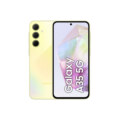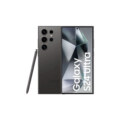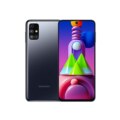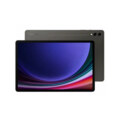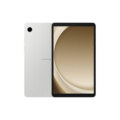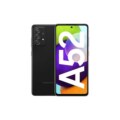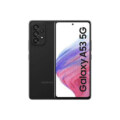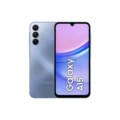Samsung Galaxy A13
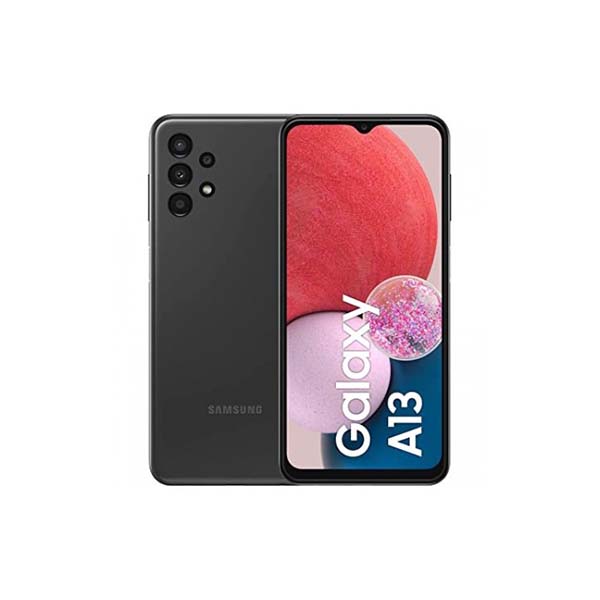

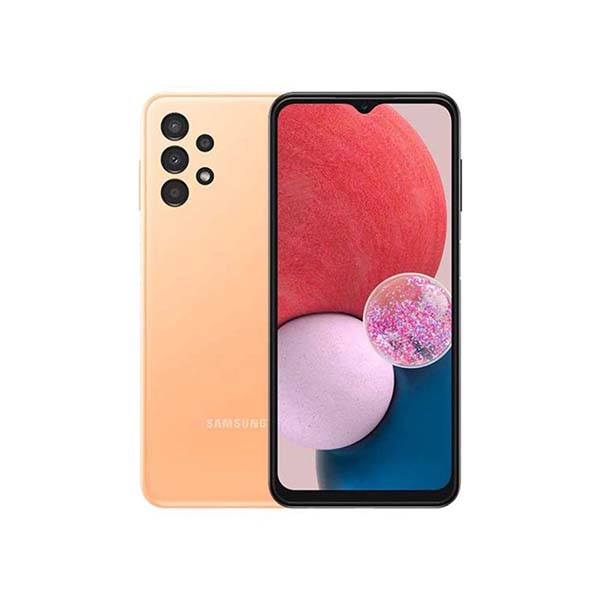
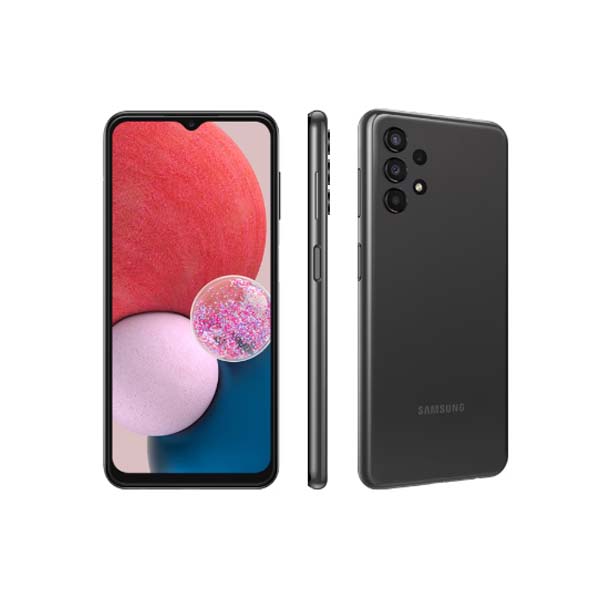
Specs
General
| Device Type | Smart Phone |
| Model | SM-A135F, SM-A135F/DS, SM-A135M, SM-A135U, SM-A135U1, SM-A135N |
| Announced | 04 March, 2022 |
| Released | 23 March, 2022 |
| Status | Available |
Design
| Dimensions | 165.1 x 76.4 x 8.8 mm |
| Weight | 195 g |
| Protection | Glass front (Gorilla Glass 5), plastic frame, plastic back |
| Colors | Black, White, Peach, Blue |
Display
| Refresh Rate | 60 Hz |
| Display Type Display Technology => A number of display technologies and types used in mobile phones => TFT (Thin Film Transistor), IPS (In-Place Switching), OLED (Organic Light Emitting Diode), AMOLED (Active-Matrix Organic Light-Emitting Diode), Super AMOLED (an even advanced version of AMOLED), Resistive Touchscreen (Resistive touchscreens contain two layer of conductive material with a very small gap between them which acts as a resistance), Capacitive Touchsceen (Capacitive touchscreen technology consists of a layer of glass coated with a transparent conductor) | PLS LCD |
| Size | 6.5 inches (16.51 cm) |
| Resolution | 720x1600 px (HD+) |
| Display Colors Display Colors is refers to the number of different shades of colors that the screen is capable of displaying => 64K colors, 256K colors and 16 million colors, Obviously 16M is highest available range of colors and better than others. | 16M colors |
| Pixel Density Pixel Density (PPI) is refers to the concentration of pixels on a particular display, measured in pixels per inch (ppi). Pixel density is calculated by dividing the diagonal pixel resolution of a display by its diagonal size, higher pixel density better display quality. | 270 ppi |
| Touch Screen | Yes, Capacitive Touchscreen, Multi-touch |
| Display Protection Display Protection => Gorilla Glass is a special alkali-aluminosilicate glass shield with exceptional damage resistance that helps protect mobile displays from scratches, drops, and bumps of everyday use, It is always better to go for a smartphone with Gorilla Glass for that added protection and peace of mind. | Glass front (Gorilla Glass 5) |
Camera
| Front Camera | 5 MP f/2.0 |
| Camera Setup | Quad |
| Main Camera Camera is able to capture photographs and usually videos, The most important characteristics of a camera are the resolution (measured in megapixels), lens focus type (fixed or automatic), higher megapixel cameras are known to capture higher quality photos, but not always a good measurement of the photos quality. |
50 MP, f/1.8, (wide), PDAF 5 MP, f/2.2, 123˚ (ultrawide), 1/5.0", 1.12µm 2 MP, f/2.4, (macro) 2 MP, f/2.4, (depth) |
| Image | 8150 x 6150 Pixels |
| Video | 1920x1080 @ 30 fps |
| Camera Features | Geo-tagging, touch focus, face detection, panorama, HDR, Video (1080p@30/60fps) |
| Flash Flash Light => There is commonly two types of flash lights are used in camera mobile phones, LED Flash (LED flash offers lower power consumption with drive circuitry that takes up very little room, LEDs can be strobed faster than any other light source), Xenon Flash (xenon flash produces an extremely intense full-spectrum white light for a very short duration) | LED flash |
Hardware
| Operating System OS => Every computer system run on a base software called Operating System (OS). Operating System controls all basic operations of the computer (such as smartphone, PDAs, tablet computers and other handheld devices). The Operating System allows the user to install and run third party applications (apps), apps are used to add new functionality to the device. | Android 12 |
| Chipset Chipset is a group of integrated circuits designed to perform one or a more dedicated functions, often with real time computing constraints, Popular smartphones are equipped with more advanced embedded chipsets that can do many different tasks depending on their programming. | Exynos 850 (8 nm) |
| CPU CPU (Central Processing Unit) mostly known as processors, CPU processes instructions in order to carry out certain functions that make your device operate properly. Processors are often described as the brain of computers, smartphones and tablets, Smartphones and tablets rely on processors to carry out their every task, Processors are an incredibly important factor in selecting any type of computing device, including your smartphone. | Octa-core (4x2.0 GHz Cortex-A55 & 4x2.0 GHz Cortex-A55) |
| Architecture | 64 bit |
| Fabrication | 8 nm |
| GPU GPU (Graphics Processing Unit) is a single-chip processor designed to rapidly manipulate and alter memory to accelerate the creation of images in a frame buffer intended for output to a display, This includes things such as lighting effects, object transformations, and 3D motion. | Mali-G57 MC2 |
| RAM (Memory) RAM (Random Access Memory) is a type of computer memory that can be accessed randomly, any byte of memory can be accessed without touching the preceding bytes that allows information to be stored and accessed quickly from random locations. RAM is the most common type of memory found in computer systems, smartphones, tablets and other electronic devices. | 4 GB |
| Internal Storage Internal Storage is a data storage space (flash memory) mostly used in smartphones, tablets and other electronic devices where operating system, apps, music, photos, videos, files and other user data Is stored. | 64 GB |
| Card Slot Memory Card Slot is a special slot for inserting a memory card. Memory cards allow you to expand the phone's built-in memory, A memory card (sometimes called a flash memory card or a storage card) is a small storage medium used to store data such as text, pictures, audio, and video, for use on small, portable or remote computing devices such as mobile phones, mp3 players, digital cameras. | |
| Sensors Sensors are electronic components that detects and responds to some type of input from the physical environment. The specific input could be light, heat, motion, moisture, pressure and location, The output is generally a signal that is converted to use in computing systems, a location sensor, such as a GPS receiver is able to detect current location of your electronic device. | Accelerometer, Fingerprint (side-mounted), Virtual proximity sensing |
Network
| SIM TYPE SIM (Subscriber Identity Module) is a small card that contains mobile network subscriber's account information. This allows the phone using the card to attach to a mobile network. The SIM card is most commonly associated with GSM and UMTS mobile networks. Moving a SIM card from one phone to another allows a subscriber to switch mobile phones without having to contact their mobile network carrier. SIM cards can also be used by a phone to store limited amounts of data, such as phone numbers and text messages. | Nano SIM |
| SIM Technology | Dual Sim, Dual Standby |
| 2G Network | GSM 850 / 900 / 1800 / 1900 |
| 3G Network | UMTS 1900 / 2100 / 850 / 900 MHz |
| 4G Network | LTE band 1(2100), 2(1900), 3(1800), 5(850), 7(2600), 8(900), 20(800), 38(2600), 40(2300), 41(2500) |
Multimedia
| FM Radio | |
| Stereo Speakers | NO |
| Loudspeaker | YES |
| Audio Jack | 3.5mm Audio Jack |
Connectivity
| Wi-fi Wi-Fi is a popular wireless networking technology using radio waves to provide high-speed network connections that allows devices to communicate without cords or cables, Wi-Fi is increasingly becoming the preferred mode of internet connectivity all over the world. | Wi-Fi 802.11 a/b/g/n/ac, dual-band |
| Bluetooth Bluetooth is a wireless communications technology for exchanging data between mobile phones, headsets, computers and other network devices over short distances without wires, Bluetooth technology was primarily designed to support simple wireless networking of personal consumer devices. | v5.0 with A2DP, LE |
| GPS GPS The Global Positioning System is a satellite-based radio navigation system, GPS permits users to determine their position, velocity and the time 24 hours a day, in all weather, anywhere in the world, In order to locate your position, your device or GPS receiver must have a clear view of the sky. | Yes + A-GPS support & Glonass, BDS |
| USB | USB Type-C 2.0, USB On-The-Go |
| EDGE EDGE (Enhanced Data GSM Environment) is a wireless network technology generally considered the next step in the 2G network offers data transfer rates up to four times faster than ordinary GSM networks, Generally, EDGE is used for the purpose of wireless data transfer, such as sharing pictures and videos or browsing the Internet via a mobile phone connection. | |
| GPRS GPRS (General Packet Radio Service) is a packet oriented mobile data service on the 2G and 3G cellular communication system's global system for mobile communications (GSM), Generally, GPRS is used for the purpose of wireless data transfer, such as sharing pictures and videos or browsing the Internet via a mobile phone connection. | |
| Speed | 3G (HSPA 42.2/5.76 Mbps), 4G LTE-A |
| Wi-fi Hotspot | |
| NFC NFC (Near field communication) is a set of standards for smartphones and similar devices to establish peer-to-peer radio communications with each other by touching them together or bringing them into proximity, usually no more than a few inches. |
Features
| Messaging | SMS(threaded view), MMS, Email, Push Mail, IM |
| Web Browser Web Browser => a web browser is a software application used to locate, retrieve and display content on the World Wide Web, including Web pages, images, video and other files, The primary function of a web browser is to render HTML, the code used to design or markup webpages. | HTML5 |
| Games | Built-in + Downloadable |
| Torch |
Battery
| Battery Type Battery Type => Cell phones run on various kinds of batteries depending on the manufacturer, phone size or shape and features. There are basically four types of cell phone batteries => Lithium Polymer, Lithium Ion, Nickel Metal Hydride and Nickel Cadmium. | Li-Ion (Lithium Ion) |
| Capacity Battery Capacity is a measure (typically in Amp-hr) of the charge stored by the battery, and is determined by the mass of active material contained in the battery. The battery capacity represents the maximum amount of energy that can be extracted from the battery under certain conditions. | 5000 mAh |
| Placement | Non-removable |
| Wireless Charging Wireless Charging (Inductive Charging) uses an electromagnetic field to transfer energy between two objects. This is usually done with a charging station. Energy is sent through an inductive coupling to an electrical device, which can then use that energy to charge batteries or run the device. | Yes |
| Extra | Fast charging 15W |
Samsung Galaxy A13 Detailed Review
Introduction: The Samsung Galaxy A13 is a budget-friendly smartphone released in March 2022. Aimed at offering essential features at an affordable price, the Galaxy A13 sits within Samsung’s popular Galaxy A series. This review will provide a comprehensive look at the device’s design, display, performance, camera system, battery life, software experience, and overall value, along with a detailed list of pros and cons.
Specifications at a Glance
- Display: 6.6-inch PLS TFT, 1080 x 2408 pixels (FHD+)
- Processor: Exynos 850 (Octa-core, 4×2.0 GHz Cortex-A55 & 4×2.0 GHz Cortex-A55)
- RAM: 3 GB / 4 GB / 6 GB
- Storage: 32 GB / 64 GB / 128 GB (expandable via microSD card up to 1 TB)
- Rear Cameras: 50 MP (f/1.8) main, 5 MP (f/2.2) ultrawide, 2 MP (f/2.4) macro, 2 MP (f/2.4) depth sensor
- Front Camera: 8 MP (f/2.2)
- Battery: 5,000 mAh with 15W fast charging
- Operating System: Android 12 with One UI Core 4.1
- Dimensions: 165.1 x 76.4 x 8.8 mm
- Weight: 195 grams
- Connectivity: 4G LTE, Wi-Fi 802.11 a/b/g/n/ac, Bluetooth 5.0, USB Type-C
Design and Build Quality
Aesthetics:
- Simple and Functional Design: The Galaxy A13 features a clean, minimalistic design with a plastic back and frame. It is available in several colors, including Black, White, Blue, and Peach. The matte finish reduces fingerprints and smudges, maintaining a neat appearance.
- Ergonomics: With its slightly curved edges and slim profile, the Galaxy A13 is comfortable to hold. Despite its large 6.6-inch display, the phone is manageable, though it may be slightly bulky for users with smaller hands.
Build Quality:
- Durable Construction: The phone’s plastic build is typical for budget devices, offering durability while being prone to scratches and minor dents. The build quality is adequate for its price range but lacks the premium feel of higher-end devices.
- Side-Mounted Fingerprint Sensor: The fingerprint scanner integrated into the power button provides convenient and quick access to the device, though it may require some adjustment to get used to its placement.
Overall, the design and build of the Galaxy A13 are practical and functional, with a focus on affordability and durability.
Display
Specifications:
- Size: 6.6 inches
- Resolution: 1080 x 2408 pixels (FHD+)
- Technology: PLS TFT
- Aspect Ratio: 20:9
- Pixel Density: ~400 ppi
Performance:
- Clear and Sharp: The 6.6-inch FHD+ display provides sharp and detailed visuals, making it suitable for media consumption, browsing, and general use.
- PLS TFT Technology: The PLS TFT panel delivers decent color accuracy and brightness. While it is not as vibrant as AMOLED screens, it is satisfactory for everyday tasks.
- Outdoor Visibility: The display performs well in most lighting conditions, though it may struggle in direct sunlight, requiring users to adjust the brightness settings.
In summary, the Samsung Galaxy A13 offers a good display for its price range, with the FHD+ resolution being a standout feature in the budget segment.
Performance
Hardware:
- Processor: Powered by the Exynos 850 chipset, the Galaxy A13 features an octa-core processor with a focus on efficiency rather than high performance. It is complemented by 3 GB, 4 GB, or 6 GB of RAM, depending on the variant.
- Storage: The phone offers options of 32 GB, 64 GB, or 128 GB of internal storage, expandable via microSD card up to 1 TB, providing ample space for apps, media, and files.
Performance Evaluation:
- Everyday Use: The Exynos 850 chipset handles basic tasks such as web browsing, social media, and media playback without significant issues. However, users may experience occasional lag when multitasking or running more demanding apps.
- Gaming: The Galaxy A13 can handle light gaming, but performance may be limited for more graphics-intensive games. Games like PUBG Mobile or Call of Duty: Mobile can run at lower settings, with potential frame drops during intensive gameplay.
- Benchmark Scores: Benchmark results align with other budget devices, providing sufficient power for users who prioritize affordability over raw performance.
Overall, the Samsung Galaxy A13 is suitable for users who need a reliable phone for everyday tasks but may not meet the needs of those seeking high performance or advanced gaming capabilities.
Camera
Rear Cameras:
- 50 MP Main Camera (f/1.8): The primary camera delivers detailed and vibrant photos in good lighting conditions. It is a standout feature in the budget segment, offering high resolution and good color reproduction.
- 5 MP Ultrawide Camera (f/2.2): This camera provides a broader field of view, useful for landscape and group shots. It performs reasonably well but lacks the detail and clarity of the main camera.
- 2 MP Macro Camera (f/2.4): The macro camera is intended for close-up shots but offers average results with limited detail and color accuracy.
- 2 MP Depth Sensor (f/2.4): The depth sensor helps with portrait mode, creating a bokeh effect with decent edge detection and background blur.
Front Camera:
- 8 MP (f/2.2): The front camera captures selfies and video calls with acceptable quality in good lighting, though it struggles with noise in low-light conditions.
Camera Performance:
- Daylight Photography: The main camera excels in well-lit environments, providing sharp and colorful images. The ultrawide and macro cameras offer functional performance but are less impressive.
- Low-Light Performance: The camera system struggles in low-light scenarios, producing images with noticeable noise and reduced detail. The lack of a dedicated Night mode limits performance in dark settings.
- Video Recording: The Galaxy A13 supports 1080p video recording at 30fps, offering decent quality but with limited stabilization, resulting in some shakiness in handheld footage.
Overall, the camera system of the Samsung Galaxy A13 is versatile for its price, with the 50 MP main camera being a significant highlight. However, other lenses offer average performance, especially in challenging lighting conditions.
Battery Life
Specifications:
- Capacity: 5,000 mAh
- Charging: 15W fast charging
Performance:
- Exceptional Battery Life: The 5,000 mAh battery provides excellent endurance, easily lasting through a full day of heavy use or up to two days with moderate use. This is a strong feature for users who require long-lasting power.
- Charging Speed: The 15W fast charging is slower compared to some competitors but sufficient for a budget device, taking approximately two hours for a full charge.
In summary, the Samsung Galaxy A13 offers impressive battery life, making it an excellent choice for users who need a device with long-lasting power.
Software and Ecosystem
Operating System:
- Android Version: The Galaxy A13 ships with Android 12 and Samsung’s One UI Core 4.1, a streamlined version of Samsung’s user interface tailored for budget devices.
- User Interface: One UI Core provides a clean and intuitive experience with essential features such as Dark Mode, Focus Mode, and Digital Wellbeing tools. It lacks some advanced features found in the full version of One UI but remains well-optimized for the device’s hardware.
User Experience:
- Smooth Operation: The software experience is generally smooth and user-friendly, with regular updates from Samsung to enhance security and performance.
- Pre-Installed Apps: The phone comes with some pre-installed apps, which can be uninstalled or disabled if not needed.
Overall, the software experience on the Samsung Galaxy A13 is solid, with One UI Core offering a good balance of features and usability for a budget device.
Pros & Cons
Pros:
- Large FHD+ Display: The 6.6-inch display with FHD+ resolution provides sharp and clear visuals, enhancing media consumption and general use.
- 50 MP Main Camera: The high-resolution main camera captures detailed and vibrant photos, a notable feature for a budget device.
- Impressive Battery Life: The 5,000 mAh battery offers long-lasting performance, easily lasting through a full day or more of use.
- Expandable Storage: With up to 128 GB of internal storage and support for microSD cards up to 1 TB, there is ample space for apps and media.
- Affordable Price: The Galaxy A13 delivers good value for money, offering essential features at an accessible price point.
Cons:
- Average Performance: The Exynos 850 chipset provides adequate performance for basic tasks but struggles with demanding applications and gaming.
- Plastic Build: The plastic construction, while durable, lacks the premium feel of higher-end devices and is prone to scratches.
- Limited Low-Light Camera Performance: The camera system struggles in low-light conditions, with noticeable noise and reduced detail.
- Slow Charging: The 15W fast charging is slower compared to some competitors, taking longer to recharge the battery.
- No 5G Support: The Galaxy A13 lacks 5G connectivity, which is becoming more common in budget smartphones.

Conclusion
The Samsung Galaxy A13 is a reliable budget smartphone that offers a good mix of features for its price. With a large FHD+ display, a capable 50 MP main camera, and impressive battery life, it is well-suited for users who need a dependable device for everyday use. While it has some limitations, such as average performance and limited low-light camera capabilities, it provides strong value for money. The Galaxy A13 is a practical choice for budget-conscious users seeking a solid smartphone experience.
Review
Disclaimer Note
All prices in Pakistan is updated daily from the price list provided by local shops and dealers but we can not guarantee that the information / price on this page is 100% correct (Human error is possible), always visit your local shop for exact cell phone cost & rate.
